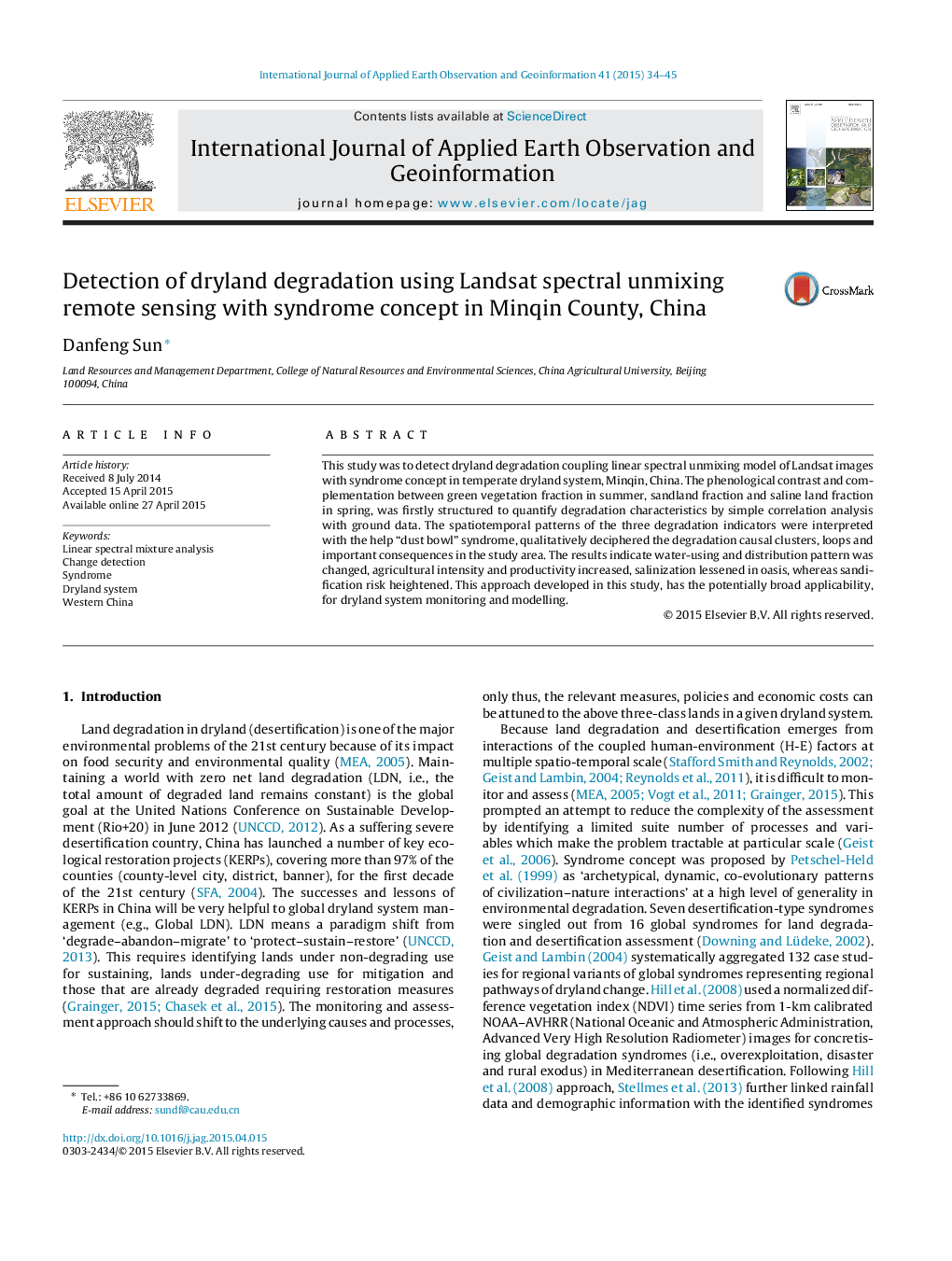| Article ID | Journal | Published Year | Pages | File Type |
|---|---|---|---|---|
| 4464678 | International Journal of Applied Earth Observation and Geoinformation | 2015 | 12 Pages |
•Summer green vegetation fraction, sandland fraction in spring, and spring saline land fraction were firstly structured to quantify degradation, by simple correlation analysis with ground data in the study area.•The spatiotemporal patterns of the three indicators with the integrated syndrome hypothesis framework, qualitatively deciphered the redistribution of sand/salts/water between patchiness for interpreting degradation mechanics.•This study demonstrated the multiseasonal TM LSMA for degradation detection, and the spatiotemporal redistribution of water resources in patchiness, is the key element of syndrome in dryland oasis, in Minqin County, China.
This study was to detect dryland degradation coupling linear spectral unmixing model of Landsat images with syndrome concept in temperate dryland system, Minqin, China. The phenological contrast and complementation between green vegetation fraction in summer, sandland fraction and saline land fraction in spring, was firstly structured to quantify degradation characteristics by simple correlation analysis with ground data. The spatiotemporal patterns of the three degradation indicators were interpreted with the help “dust bowl” syndrome, qualitatively deciphered the degradation causal clusters, loops and important consequences in the study area. The results indicate water-using and distribution pattern was changed, agricultural intensity and productivity increased, salinization lessened in oasis, whereas sandification risk heightened. This approach developed in this study, has the potentially broad applicability, for dryland system monitoring and modelling.
